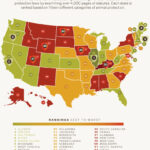As winter blankets the landscape with its icy grip, pet owners find themselves at a poignant crossroads. The enchanting allure of snowflakes, glistening in the sunlight, often masks a more somber reality: the well-being of our canine companions. A common observation prevails—dogs seem less active in the cold months. This observation begs a crucial inquiry: Is leaving your dog outside in frigid temperatures a manifestation of animal cruelty? To navigate this nuanced discussion, it is imperative to delve into the anatomy of winter care and understand the profound responsibilities that accompany dog ownership during this challenging season.
Winter poses unique challenges that can significantly impact a dog’s health and happiness. The drop in temperature can lead to various physiological reactions in dogs, influencing their behavior and activity levels. While some breeds are better adapted to cold climates, others can suffer from hypothermia, frostbite, or other ailments when exposed to inadequate shelter or prolonged outdoor stays. The American Veterinary Medical Association highlights that temperatures below 32°F (0°C) can pose severe risks, especially for smaller, short-haired, elderly, or ill dogs. It is essential for pet owners to comprehend that not all dogs are born equal when it comes to winter prowess.
Leaving a dog outside in the cold does not always constitute blatant cruelty, yet it often reveals a deeper issue: a lack of understanding surrounding proper pet care. The issue can be less about intentional malice and more about ignorance—the failure to recognize a dog’s needs in extreme weather. When temperatures plummet, a dog’s survival instincts may compel them to seek shelter indoors. Still, many owners may erroneously believe that dogs, equipped with fur coats, can brave the elements indefinitely. Such misconceptions can lead to tragic outcomes.
Beyond mere survival, winter poses added concerns related to mental and emotional well-being. Dogs are, by nature, social animals. Leaving them outside, even with adequate shelter, can cause feelings of isolation and anxiety. This emotional toll can manifest in destructive behaviors or prolonged stress responses, compounding the physical risks. The canine psyche thrives on companionship and connection; thus, during chilly months, intervention from their human counterparts becomes paramount.
To counter the risks associated with winter exposure, pet owners should embrace a holistic approach to winter care. Firstly, providing appropriate shelter is essential. A doghouse must be insulated, windproof, and elevated off the ground to prevent heat loss and moisture penetration. Additionally, bedding made of straw or blankets can create a warm haven for dogs spending time outdoors. Ideally, shelters should be located in areas shielded from harsh winds and precipitation. It is crucial to regularly check these shelters and ensure they remain comfortable and dry, as deteriorating conditions can lead to serious health concerns.
Nourishment also plays a critical role in a dog’s winter care. Dogs expend more energy to maintain their body heat in colder temperatures, necessitating an adjustment in their diet. Increasing caloric intake and ensuring access to fresh, unfrozen water can bolster their resilience against the elements. Hydration is as vital in winter as it is in summer, as dogs can easily become dehydrated. Ice formation can make this more challenging, highlighting the importance of regular monitoring of their water supply.
Daily exercise routines are another area demanding attention. Pets may exhibit lower energy levels during the winter, prompting owners to adjust their exercise plans. Stagnation can create physical and behavioral consequences, such as obesity and anxiety. Therefore, it is essential to provide appropriate indoor activities and limit outdoor excursions to times when temperatures are manageable. Short bursts of activity, coupled with engagement through interactive toys and games, can keep a dog mentally stimulated and physically active.
Veterinary care holds equal significance in winter preparations. Regular check-ups are crucial, as certain breeds possess predispositions to winter-related health hazards. A veterinarian can offer tailored advice on dietary adjustments, exercise plans, and any additional precautions specific to a dog’s breed and health status. Seasonal allergies and skin irritations may emerge with the use of heated indoor systems; therefore, regular skin checks and grooming ensure dogs feel comfortable year-round.
In addition to the physical aspects of winter care, pet owners should strive to create a supportive and loving environment for their dogs. Emotional well-being should never be overlooked. Engaging in training and bonding activities strengthens the human-animal connection. Providing positive reinforcement and building trust can mitigate the impacts of isolation and provide dogs with the reassurance they need during the colder months.
Ultimately, considering the myriad elements contributing to a dog’s health and happiness is vital, especially during winter. Leaving a dog outside in the cold may not always be classified as cruelty, but neglecting their needs certainly flirts with that line. It is a call to action for pet owners to educate themselves on dog care and cultivate empathy for their four-legged friends. By addressing the specific needs of dogs in winter, we not only safeguard their well-being but also transcend the barriers of neglect, ensuring they experience warmth, companionship, and joy throughout the cold season. Embracing this long-term commitment fosters a society that champions the humane treatment of all animals, particularly our loyal companions.










